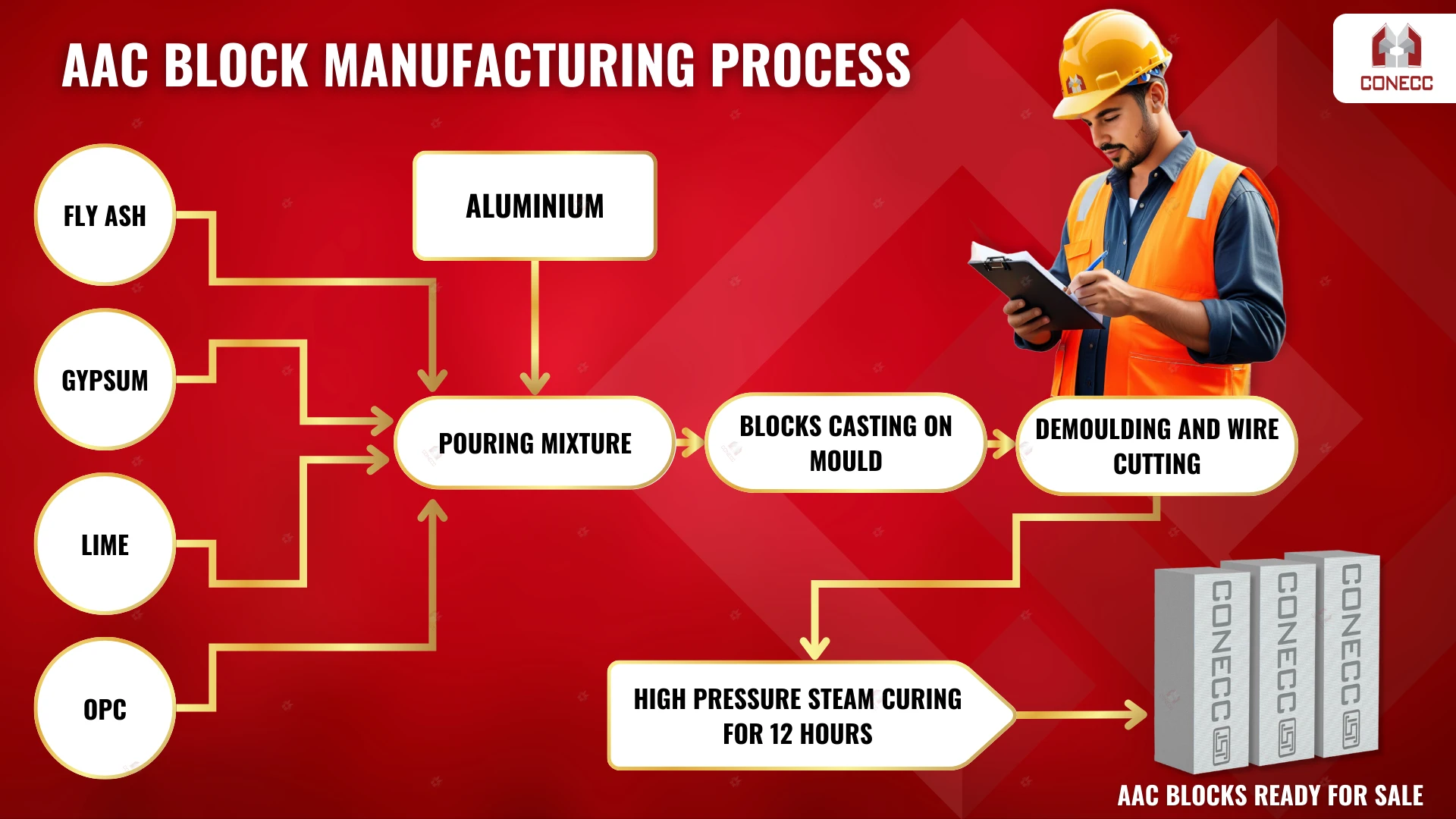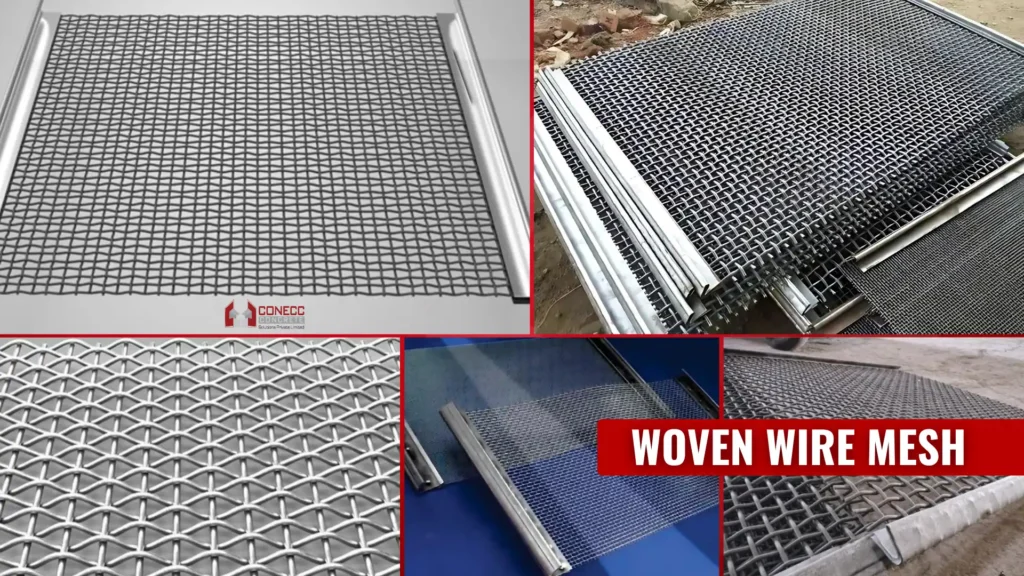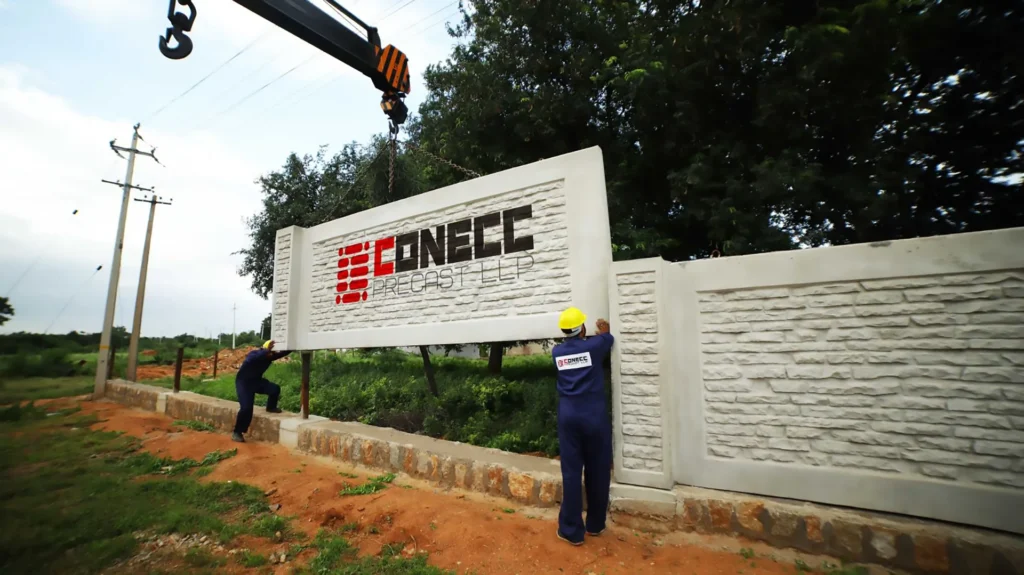AAC Block Manufacturing Process

How are aac blocks made?
Step 1: Raw Material Preparation
The raw material preparation and processing utilized in the production of AAC blocks is the first step. They include:
- Cement: 53-grade Ordinary Portland Cement (OPC) is used to achieve the desired strength and quality.
- Fly Ash: It is a waste product of thermal power stations and forms a majority of AAC blocks.
- Lime: Lithium is powdered to facilitate breaking up into finest form to avail the chemical bonding to create block.
- Gypsum: A common building material that is employed to regulate the setting time of the mix.
Step 2: Mixing and Dosing
After raw materials preparation, the materials are mixed proportionately in order to obtain a slurry. The ratios are usually:
- Fly Ash: 69%
- Lime: 20%
- Cement: 8%
- Gypsum: 3%

A small quantity of aluminum powder (approximately 0.08% dry weight) is added to the mixture. The addition of this introduces hydrogen gas bubbles, causing the mixture to expand and giving the lightness typical of the AAC blocks.
Step 3 – Casting, Rising, and Curing
The pre-treated slurry is subsequently cast into pre-coated molds in oil in order to prevent sticking. During placement in the molds, the aluminum reacts with the water and the calcium hydroxide to give hydrogen gas. This causes the slurry to expand and form numerous tiny bubbles of air, giving a lightweight and insulating product. The mixture is thereafter allowed to rise and pre-cure between 60 and 240 minutes depending on environmental conditions and the mix used.

Step 4 – Demoulding and Cutting
After pre-curing, the hardened bulk or the “green cake” is sufficiently hard to be demolded. The green cake is then cut into block dimensions of the desired shape using specialized cutting tools after demolding.

Step 5: Autoclaving
Steam hisses as cut blocks enter the autoclave. For 12 hours, these massive steel chambers subject the AAC to intense heat and pressure. Temperatures soar to 180°C while pressures climb between 800-1200 kPa. This high-pressure curing transforms the blocks, imparting final strength and longevity. As the process concludes, durable AAC emerges, ready for construction.

Step 6: Packaging and Delivery
From raw materials to your doorstep, Conecc Concrete Solutions crafts AAC blocks with precision. Post-autoclaving, each block faces rigorous tests, meeting strict quality benchmarks. Only the best are securely packaged, safeguarding their integrity during transport. These lightweight, insulating, and durable blocks arrive at your site swiftly, primed for immediate use. Our meticulous process guarantees superior products, perfectly suited for today’s building demands.

| PLACES WITH FAST DELIVERY | CONECC LIGHTWEIGHT BLOCKS NAMES |
|---|---|
| Karnataka | lightweight blocks in Karnataka |
| Andhra Pradesh | lightweight blocks in Andhra Pradesh |
| Goa | lightweight blocks in goa |
| Shimoga | lightweight blocks in Shimoga |
| Hubli | lightweight blocks in Hubli |
| Belgaum | lightweight blocks in Belgaum |
| Davangere | lightweight blocks in davangere |
| Udupi | lightweight blocks in Udupi |
| Chikmagalur | lightweight blocks in Chikmagalur |
| Chitradurga | lightweight blocks in Chitradurga |
| Honnavar | lightweight blocks in honnavar |
Recent Posts
What Is Woven Wire Mesh?
Hey, if you're working on any project, woven wire mesh is basically...
Read MoreCONECC BROCHURE DOWNLOAD
Home AAC Blocks Products AAC Blocks Precast Walls Wire Mesh Chain Link...
Read MoreTop 10 FAQs About AAC Blocks Answered by Experts
Discover the innovative world of AAC blocks—Autoclaved Aerated Concrete blocks that are...
Read MoreGreen building material In India – 2025 │AAC Blocks
Discover the future of construction with AAC blocks, the eco-friendly building material...
Read More



